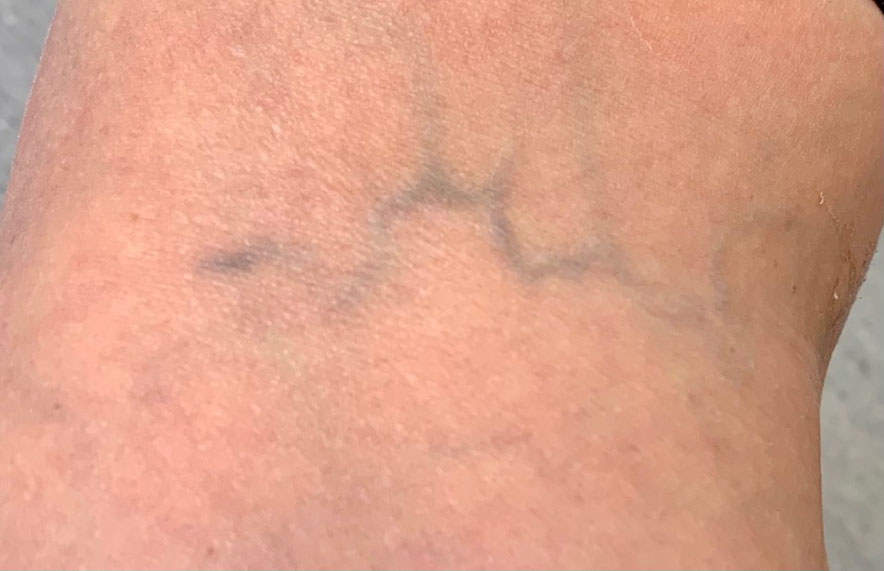Leg Veins: Reticular Veins Causes and Treatments.
What are reticular veins?
Reticular veins are medium sized blue-green veins that appear near the surface of the skin on the leg and are part of the abnormal network of veins including spider veins and varicose veins. Size wise, reticular veins are in between a varicose vein and spider vein.
Like spider veins and varicose veins, reticular leg veins often develop because of a medical condition called chronic venous insufficiency (CVI). In CVI, the vein valves no longer function properly and there is abnormal blood flow. The damaged valves are unable to pump blood back up the leg vein to the heart, which causes blood to collect inside the vein.
Over time this can cause the leg vein to grow bigger and if enough pressure builds up, then spider veins can sprout from the reticular veins. This is why we sometimes refer to reticular veins as feeder veins. The reticular veins are feeding the spider veins above.
Aside from CVI, other causes of reticular veins, spider veins and varicose veins include:
- Genetics: The most common cause of varicose veins and spider veins is a family history.
- Advancing age: The valves in the vein walls get weaker over time. The leg muscles, which support the leg veins and pump blood upward, also weaken with age.
- Pregnancy: The increase in blood volume combined with the extra weight of the growing foetus places more pressure on leg veins during pregnancy.
- Gender: Spider veins affect more women than men.
- Obesity: Body weight places pressure on leg veins. The heavier you are, the greater the pressure.
- Hormones: Hormonal treatments for contraception and menopause have been associated with spider veins as oestrogen can weaken vein valves.
- Sitting or standing for extended periods: Leg veins have to work harder to pump blood upwards if a person remains in the same position for long periods of time.
- Trauma: A previous blood clot or vein damage can weaken the valves making them unable to function correctly. A history of cellulitis in the affected leg can also damage the small microcirculation of the leg predisposing it to venous insufficiency.
Do reticular veins cause symptoms?
Reticular leg veins, like spider veins and varicose veins can occasionally be painful or cause an itching and burning sensation.
These symptoms are caused by blood collecting in the leg veins. Once this process starts, the body tries to heal itself by releasing hormones and proteins in the local area. One of these is histamine, which causes itch. Of course we know that itching our skin will only make the problem worse but it is difficult to resist this urge! Scratching the skin will only further damage the small veins near the surface of the skin, which causes the release of more histamine, which prolongs the cycle.
The simplest way to relieve the itch is taking a cool shower or bath, or applying a cold flannel to the affected area. Elevating the legs can also help.
Can reticular veins be treated?
Often reticular veins are a sign of a deeper vein problem so it is always best to seek medical advice before embarking on treatment. If chronic venous insufficiency is suspected, then a duplex ultrasound is requested before treatment.
The good news is that reticular veins, along with spider veins and varicose veins can be easily treated.
Endothermal techniques such as radiofrequency ablation are the gold standard treatment of varicose veins. Reticular veins and spider veins are better suited to sclerotherapy. Both treatments cause damage to the vein wall resulting in a scar. Blood is then redirected through the healthy deep veins. Spider veins may also suitable for laser treatment.
One of the most important things you can do for your superficial vein concerns is seek medical advice from a vein specialist.
At Palm Clinic we can diagnose your problem and give you strategies for managing your concerns as well as giving you a long term treatment plan which may include radiofrequency ablation, ultrasound guided foam sclerotherapy or microsclerotherapy.




